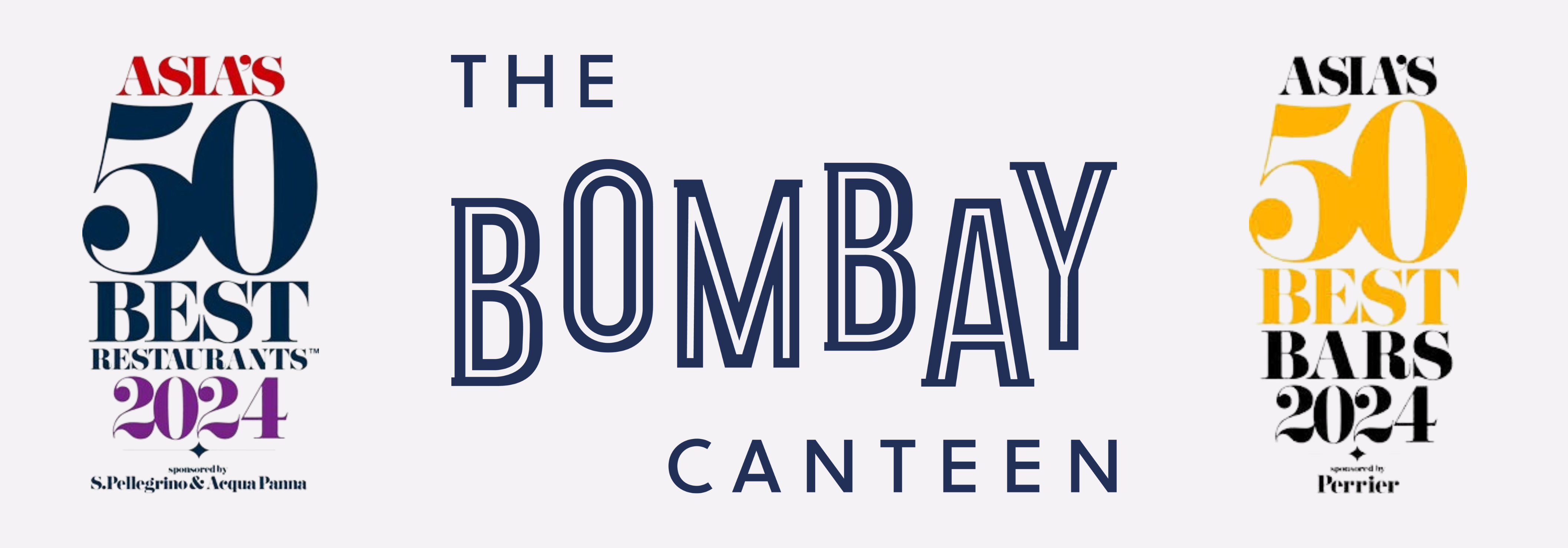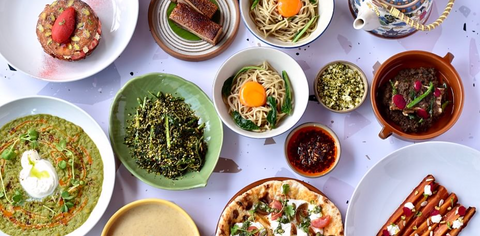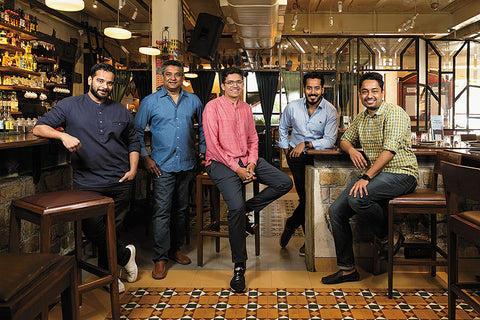Glass dividers, British brown furniture, worn-out walls revealing the cement, and a seasonal menu that changes every three to four months — that is The Bombay Canteen for you.
Situated in the heart of Mumbai’s Kamala Mills, The Bombay Canteen was awarded #1 on Top Restaurant Awards 2018 by Conde Nast Traveller and was featured as one of the World’s 50 Best Restaurants in the Discover List.
Founded in 2015, The Bombay Canteen introduces diners to regional and seasonal delicacies, with what the founders say, “A healthy side of the famous Bombay love.”
After being closed to diners for the first nine months of the pandemic, The Bombay Canteen recently reopened its doors to allow its customers to enjoy their meals at the award-winning restaurant and bar. The Bombay Canteen’s new menu promises over 20 new dishes, along with its classics.

Partners of The Bombay Canteen Sameer Seth and Yash Bhanage In a recent conversation, YS Weekender caught up with the Partners of The Bombay Canteen’s parent company Hunger Inc Hospitality — Sameer Seth and Yash Bhanage — to know the secret ingredient of the famous restaurant.
Aligning of the stars Sameer and Yash both had a different start to the food industry.
Sameer, a graduate from IIM Kozhikode, worked with CitiBank for a couple of years until he realised, “This is not what I wanted to do in life.” It was then that Sameer quit his cushiony job to join a restaurant in Delhi. “With them, I opened three restaurants and shut seven, yet there was so much more to learn, and owning my own business was the eventual dream,” he tells YS Weekender.
Yash, on the other hand, is a graduate of IHM Goa, and his first job was that of a waiter in a restaurant. He worked in Mumbai with the Hyatt group before deciding to do an MBA. The duo met at the Cornell School of Hotel Administration in 2010.
While Sameer and Yash connected the very first time they met, eventually after college, Sameer ended up in New York and Yash moved to Chicago to work at a bar. He later shifted to Singapore, where he was running a jazz bar and a pool-side bar.
Sameer was on the other side of the globe, working with the group of Chef Daniel Boulud in New York City. It was there that he met Chef Floyd Cardoz, the former Culinary Director of The Bombay Canteen. He joined Chef Floyd’s team, who was then opening a restaurant with the Union Square Hospitality Group.
“It was a phenomenal experience — being in New York City at a restaurant opening. It changed my perspective of what restaurants should be, and can be,” Sameer says.

All this while, both Sameer and Yash kept in touch, discussing food in their respective cities, and even did a trip to London together to check out restaurants.
The duo studied that both in the Western and Southeast Asian markets, people were reimagining comfort food in every shape and form. “That became the direction that appealed to us, and nothing like that was happening in India,” Sameer says. He explains that there was no fine-dining experience for comfort food.
“Mumbai has a much more open palette to new ideas and concepts,” Yash says. “There is an energy to this city... We looked simultaneously at Delhi and Bengaluru, but our hearts were in Bombay,” Sameer adds. Thus, began the journey of The Bombay Canteen.
“We used ‘canteen’ in the restaurant’s name because we wanted to be approachable and warm. A canteen is always associated with memories of nostalgia,” Yash reveals.


The architecture
Besides the warm hospitality and delicious dishes, its architecture makes The Bombay Canteen stand out from the rest.
“We wanted the old and the new to come together in a way that it paved the way for emotions like the nostalgia of growing up and celebrating where our food comes from in India, everyday.
The same thought process was used for space design,” Sameer explains. The mastermind behind The Bombay Canteen’s space design is the Busride Design Studio.
For the restaurant, the designing team reimagined the ruin of an old bungalow, which has walls up to three feet tall and represented colonial Mumbai. It was juxtaposed with art décor, glass, and steel structure, which is seen in the windows, and “It represents the newness,” Sameer says. The architecture of The Bombay Canteen has the old and new coming together.
Much like its menu, the architecture of The Bombay Canteen has the old and new coming together, with the emphasis given on warmth and timelessness in the design.
“We did not want it (The Bombay Canteen) to become another chef-led space that wouldn’t have any soul if the chef was not there. It had to be more about our philosophy and what we were celebrating — India,” Sameer adds. Seasonal menus The Bombay Canteen changes its menu three to four times a year. And, Yash says that this is aligned with the concept of the restaurant — "To reimagine Indian comfort food." Indian households tend to cook and serve seasonal food.
“People in India go to the market every day to get fresh vegetables and cook. Although there is a lot of work coming up with the new menu, seasonal food is always very healthy, and we wanted to come up with that philosophy,” Yash says. This concept also ensures that every time a guest visits the restaurant, they have something new to try.
Over the years, The Bombay Canteen has created a supply chain to access seasonal ingredients from across the country. “That was one of the biggest challenges we faced while opening the restaurant,” Sameer says.
Because there is no documentation of Indian food, the team at The Bombay Canteen have travelled across the country to seek inspiration from the country’s local cuisines. At any given season, the restaurant changes its menu by 30 to 40 percent. However, irrespective of the changes, classics like the Kejriwal Toast — that came in the opening menu — will never go off the list.
Similarly, the bar at The Bombay Canteen has cocktail books that tell stories about the inspiration behind every cocktail on the menu. Its recent cocktail book is inspired by Mumbai’s Marine Drive. The bar considers the seasonality of ingredients and creates home-made liquors as well, and creates its own bitters.
“We wanted to make sure that the bar is an extension of the kitchen. If the kitchen uses a certain ingredient, we make sure to use a part of the ingredient in our cocktails. Thus, we have a chemistry between the chefs and the bartenders,” Yash explains.
The cocktail book at The Bombay Canteen changes every eight months.
What to expect?
Now that The Bombay Canteen has opened its doors after nine months of takeaway only, it has introduced a new menu to celebrate the occasion. The new food menu has Charred Winter Carrots (with pickled onions, goat cheese, and toasted pistachios), Fresh Toor Raj Kachori (served with amchoor chutney, ragda, pickled dahi, and crispies), Paya Soup Momos, and Nomina Mutter Paneer, among others.
The debutant dish this season is Slow-cooked pork belly Thukpa. The new menu at The Bombay Canteen promises over 20 new dishes besides the classics .
The new bar menu at The Bombay Canteen offers newbies such as the Incredible India (a cocktail made out of vodka, basil leaves, fresh ginger, pineapple and orange juice), The Dark Monsoon (a mix of dark rum, honey ginger syrup, ginger ale, star-fruit juice, and angostura bitters), Tamarind Whiskey Shake (The Bombay Canteen’s take on whiskey sour), and Dilli Banta (an ode to the fizzy drink from the streets of Delhi with vodka, lime, kala namak, and cumin).




Comments (0)
There are no comments for this article. Be the first one to leave a message!